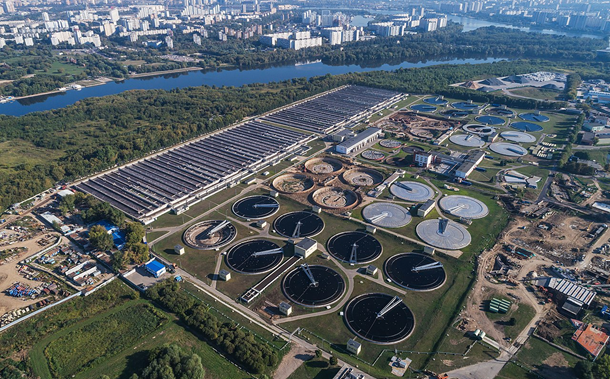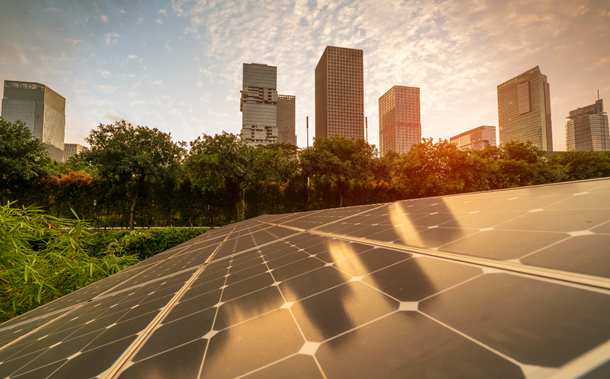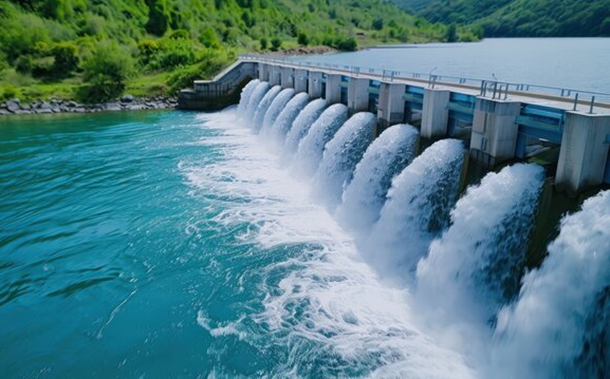Assessment of Organic Carbon Stocks at Landscape Levels Using the InVEST Software
Downloads
Doi:10.28991/CEJ-2025-011-03-018
Full Text:PDF
Downloads
[2] Aleksandrova, L., Gordeev, A. S., Babichuk, V. R., Kuryntseva, P. A., & Selivanovskaya, S. Yu. (2023). Assessment of Carbon Stocks in Soils on the Territory of the Carbon Polygon "Carbon - Volga Region". Russian Journal of Applied Ecology, 4, 12–21. doi:10.24852/2411-7374.2023.4.12.21. (In Russian).
[3] Fedotova, A.V. (2024). Assessment of Soil Carbon Reserves in the South of the European Part of Russia Arid Conditions. Scientific Agronomy Journal, 4(4(123)), 105–110. doi:10.34736/fnc.2023.123.4.016.105-110.
[4] Likhanova, I. A., Deneva, S. V., Kholopov, Y. V., Rud, E. A., Skrebenkov, E. A., & Lapteva, E. M. (2024). Litter features in different forest types in the middle taiga subzone. Theoretical and Applied Ecology, 2, 72–81. doi:10.25750/1995-4301-2024-2-072-081.
[5] Vlasenko, O. (2015). Organic matter carbon content and stocks in agrocenoses of perennial grasses in the Krasnoyarsk forest-steppe region. Proceedings of the Problems of Modern Agrarian Science, 6–9.
[6] Peri, P. L., Gaitán, J., Mastrangelo, M., Nosetto, M., Villagra, P. E., Balducci, E., Pinazo, M., Eclesia, R. P., Von Wallis, A., Villarino, S., Alaggia, F., Polo, M. G., Manrique, S., Meglioli, P. A., Rodríguez-Souilla, J., Mónaco, M., Chaves, J. E., Medina, A., Gasparri, I., ... Pastur, G. M. (2024). Soil organic carbon stocks in native forest of Argentina: a useful surrogate for mitigation and conservation planning under climate variability. Ecological Processes, 13(1), 1-22. doi:10.1186/s13717-023-00474-5.
[7] Chappell, A., Baldock, J., & Sanderman, J. (2016). The global significance of omitting soil erosion from soil organic carbon cycling schemes. Nature Climate Change, 6(2), 187–191. doi:10.1038/nclimate2829.
[8] Chimitdorzhieva, E. O. (2017). Carbon reserves in postagrogenic dry steppe soils of Western Transbaikalia. Arid Ecosystems, 7(3), 178–183. doi:10.1134/s2079096117030027.
[9] Larionov, Y. (2019). Role of Carbon Circulation as a Basis for Improvement of the Soil Fertility Monitoring System. Interexpo GEO-Siberia, 4(2), 124–134. doi:10.33764/2618-981x-2019-4-2-124-134.
[10] Semenov V., S., & Lebedeva, T. (2015). The Carbon Problem in Sustainable Agriculture: Agrochemical Aspects. Agrochemistry, 11, 3–12.
[11] Ghimire, P., Bhatta, B., Pokhrel, B., Kafle, G., & Paudel, P. (2019). Soil organic carbon stocks under different land uses in Chure region of Makawanpur district, Nepal. SAARC Journal of Agriculture, 16(2), 13–23. doi:10.3329/sja.v16i2.40255.
[12] Sambuu, A. (2024). Carbon pools in the steppes of the Republic of Tyva (Russia). E3S Web of Conferences, 510, 3037. doi:10.1051/e3sconf/202451003037.
[13] Randers, J., & Goluke, U. (2020). An earth system model shows self-sustained melting of permafrost even if all man-made GHG emissions stop in 2020. Scientific Reports, 10(1), 18456. doi:10.1038/s41598-020-75481-z.
[14] Duffy, K. A., Schwalm, C. R., Arcus, V. L., Koch, G. W., Liang, L. L., & Schipper, L. A. (2021). How close are we to the temperature tipping point of the terrestrial biosphere? Science Advances, 7(3), 1-8. doi:10.1126/sciadv.aay1052.
[15] Beillouin, D., Corbeels, M., Demenois, J., Berre, D., Boyer, A., Fallot, A., Feder, F., & Cardinael, R. (2023). A global meta-analysis of soil organic carbon in the Anthropocene. Nature Communications, 14(1), 3700. doi:10.1038/s41467-023-39338-z.
[16] Nabiollahi, K., Eskandari, S., Taghizadeh-Mehrjardi, R., Kerry, R., & Triantafilis, J. (2019). Assessing soil organic carbon stocks under land-use change scenarios using random forest models. Carbon Management, 10(1), 63–77. doi:10.1080/17583004.2018.1553434.
[17] Aynekulu, E., Vagen, T-G., Shepherd, K., Winowiecki, L. (2011). A Protocol for measurement and monitoring soil carbon stocks in agricultural landscapes. Version 1.1. World Agroforestry Centre, Nairobi.
[18] Budak, M., Günal, E., Kılıç, M., Çelik, Ä°., Sırrı, M., & Acir, N. (2023). Improvement of spatial estimation for soil organic carbon stocks in Yuksekova plain using Sentinel 2 imagery and gradient descent–boosted regression tree. Environmental Science and Pollution Research, 30(18), 53253–53274. doi:10.1007/s11356-023-26064-8.
[19] The World Bank. (2021). Soil Organic Carbon MRV Sourcebook for Agricultural Landscapes. The World Bank, Washington, United States. Available online: https://documents1.worldbank.org/curated/en/948041625049766862/pdf/Soil-Organic-Carbon-MRV-Sourcebook-for-Agricultural-Landscapes.pdf (accessed on February 2025).
[20] Polyakov, V., Abakumov, E., Nizamutdinov, T., Shevchenko, E., & Makarova, M. (2023). Estimation of Carbon Stocks and Stabilization Rates of Organic Matter in Soils of the "Ladoga” Carbon Monitoring Site. Agronomy, 13(3), 807. doi:10.3390/agronomy13030807.
[21] Maanan, M., Maanan, M., Karim, M., Ait Kacem, H., Ajrhough, S., Rueff, H., Snoussi, M., & Rhinane, H. (2019). Modelling the potential impacts of land use/cover change on terrestrial carbon stocks in north-west Morocco. International Journal of Sustainable Development and World Ecology, 26(6), 560–570. doi:10.1080/13504509.2019.1633706.
[22] Wang, R. Y., Mo, X., Ji, H., Zhu, Z., Wang, Y. S., Bao, Z., & Li, T. (2024). Comparison of the CASA and InVEST models' effects for estimating spatiotemporal differences in carbon storage of green spaces in megacities. Scientific Reports, 14(1), 5456. doi:10.1038/s41598-024-55858-0.
[23] Li, P., Chen, J., Li, Y., & Wu, W. (2023). Using the InVEST-PLUS Model to Predict and Analyze the Pattern of Ecosystem Carbon storage in Liaoning Province, China. Remote Sensing, 15(16), 4050. doi:10.3390/rs15164050.
[24] Mallick, J., Almesfer, M. K., Alsubih, M., Ahmed, M., & Ben Kahla, N. (2022). Estimating Carbon Stocks and Sequestration with Their Valuation under a Changing Land Use Scenario: A Multi-Temporal Research in Abha City, Saudi Arabia. Frontiers in Ecology and Evolution, 10, 905799. doi:10.3389/fevo.2022.905799.
[25] Li, Y., Yang, X., Wu, B., Zhao, J., Jiang, W., Feng, X., & Li, Y. (2023). Spatio-temporal evolution and prediction of carbon storage in Kunming based on PLUS and InVEST models. PeerJ, 11, 15285. doi:10.7717/PEERJ.15285.
[26] Piyathilake, I. D. U. H., Udayakumara, E. P. N., Ranaweera, L. V., & Gunatilake, S. K. (2022). Modeling predictive assessment of carbon storage using InVEST model in UVA province, Sri Lanka. Modeling Earth Systems and Environment, 8(2), 2213–2223. doi:10.1007/s40808-021-01207-3.
[27] Sharma, R., Pradhan, L., Kumari, M., Bhattacharya, P., Mishra, V. N., & Kumar, D. (2024). Spatio-Temporal Assessment of Urban Carbon Storage and Its Dynamics Using InVEST Model. Land, 13(9), 1387. doi:10.3390/land13091387.
[28] Carvalho de Castro, P. (2021). Quantifying carbon sequestration for riparian-zone restoration in Ecuador. Ph.D. Thesis, University of Northern Iowa, Cedar Falls, United States.
[29] Ismaili Alaoui, H., Chemchaoui, A., El Asri, B., Ghazi, S., Brhadda, N., & Ziri, R. (2023). Modeling predictive changes of carbon storage using invest model in the Beht watershed (Morocco). Modeling Earth Systems and Environment, 9(4), 4313–4322. doi:10.1007/s40808-023-01697-3.
[30] Kohestani, N., Rastgar, S., Heydari, G., Jouibary, S. S., & Amirnejad, H. (2024). Spatiotemporal modeling of the value of carbon sequestration under changing land use/land cover using InVEST model: a case study of Nour-rud Watershed, Northern Iran. Environment, Development and Sustainability, 26(6), 14477–14505. doi:10.1007/s10668-023-03203-2.
[31] Li, X., Huang, C., Jin, H., Han, Y., Kang, S., Liu, J., Cai, H., Hu, T., Yang, G., Yu, H., & Sun, L. (2022). Spatio-Temporal Patterns of Carbon Storage Derived Using the InVEST Model in Heilongjiang Province, Northeast China. Frontiers in Earth Science, 10, 846456. doi:10.3389/feart.2022.846456.
[32] Mungalova, V. (2024). Carbon polygons in Russia: contribution to achieving carbon neutrality. Bulletin of Science, 1, 632–635.
[33] Dochkina, D. D., & Filimonova, I. V. (2022). Socio-economic impact of the development of carbon farms in the regions. Interexpo GEO-Siberia, 2(4), 218–226. doi:10.33764/2618-981x-2022-2-4-218-226.
[34] Ivanov, A. L., Savin, I. Yu., Stolbovoy, V. S., Dukhanin, Yu. A., & Kozlov, D. N. (2021). Methodological approaches to the formation of a unified national system of monitoring and accounting of carbon balance and greenhouse gas emissions on lands of the agricultural fund of the Russian Federation. Dokuchaev Soil Bulletin, 108, 175–218. doi:10.19047/0136-1694-2021-108-175-218.
[35] Agafonov, V. B. (2023). Environmental and Legal Support for the Implementation of a Pilot Project for the Creation of Carbon Landfills and Carbon Farms. Courier of Kutafin Moscow State Law University (MSAL), 3, 17–27. doi:10.17803/2311-5998.2023.103.3.017-027.
[36] Veselova, D. N. (2023). Russia's Policy in the Field of Climate Change Mitigation. Discourse-P, 20(2), 86–105. doi:10.17506/18179568_2023_20_2_86.
[37] Gunya, A. N., Gairabekov, U. T., Makhmudova, L. Sh., & Alakhverdiev, F. D. (2021). An integrated approach to assessing land use changes and their impact on carbon dynamics in mountain landscapes of the Chechen Republic. News of the Dagestan State Pedagogical University. Natural and Exact Sciences, 15(4), 39-52. doi:10.31161/1995-0675-2021-15-4-39-52. (In Russian).
[38] Nurgaliev, D. K., Selivanovskaya, S. Y., Kozhevnikova, M. V., & Galitskaya, P. Y. (2021). Some challenges and opportunities for Russia and regions in terms of the global decarbonization trend. Georesursy, 23(3), 8–16. doi:10.18599/grs.2021.3.2.
[39] Kurganova, I. N., Lopes de Gerenyu, V. O., Ipp, S. L., Kaganov, V. V., Khoroshaev, D. A., Rukhovich, D. I., Sumin, Y. V., Durmanov, N. D., & Kuzyakov, Y. V. (2022). Pilot carbon polygon in Russia: analysis of carbon stocks in soils and vegetation. Soils and Environment, 5(2), 169. doi:10.31251/pos.v5i2.169. (In Russian).
[40] Ministry of Education and Science of Russia (2025). Carbon Supersites of the Russian Federation, Moscow, Russia. (2024). Available online: https://carbon-polygons.ru/en/ (accessed on February 2025).
[41] Zamolodchikov, Dmitry. (2021). The Carbon Cycle and Climate Change. Journal of Environmental Earth and Energy Study (JEEES). doi:10.1017/9781108924849.005. (In Russian).
[42] InVEST Software (2025). NatCap at Stanford: Stanford University. Stanford, United States. Available online: https://naturalcapitalproject.stanford.edu/software/invest (accessed on February 2025).
[43] Dragan, N. A. (2004). Soil resources of Crimea. Dolya, Simferopol, Ukraine. (In Russian).
[44] METEO (2025). Hydrometcenter of Russia, Crimean Department of Hydrometeorology and Environmental Monitoring, Moscow, Russia. Available online: https://meteo.crimea.ru (accessed on February 2025). (In Russian).
[45] Kosarev, A. N., Arkhipkin, V. S., & Surkova, G. V. (2008). Hydrometeorological conditions. The Black Sea Environment, 135-158. doi:10.1007/698_5_086.
[46] Gorbunov, R. V. (2021). Relationship of Regional Ecosystems Productivity with the Dynamics of Hydrothermal Conditions on the Territory Ofthe Crimean Peninsula. Bulletin of the State Nikitsky Botanical Gardens, 1(138), 17–25. doi:10.36305/0513-1634-2021-138-17-25.
[47] Gorbunov, R. (2023). Functioning and dynamics of regional geo-ecosystems under climate change (on the example of the Crimean Peninsula). KMK Publisher, Moscow, Russia. (In Russian).
[48] Pham, C. N., Gorbunov, R., Lapchenko, V., Gorbunova, T., & Tabunshchik, V. (2023). Biogenic Elements of Atmospheric Fallout and Impact of Sub-Mediterranean Forest Communities of Downy Oaks on Changes in the Chemical Composition of Atmospheric Precipitation. Forests, 14(2), 294. doi:10.3390/f14020294.
[49] Pham, C. N., Gorbunov, R., Lapchenko, V., Gorbunova, T., & Tabunshchik, V. (2024). Macro- and Microelements and the Impact of Sub-Mediterranean Downy Oak Forest Communities on Their Composition in Rainwater. Forests, 15(4), 612. doi:10.3390/f15040612.
[50] Egorov, V. V., Fridland, V. M., Ivanova, E. N., Rozov, N. N., Nosin, V. A., & Friev, T. A. (1987). Classification and diagnostics of soils of the USSR. A.A. Balkema, Rotterdam, Netherlands.
[51] FAO. (2014). World Reference Base for Soil Resources. International soil classification system for naming soils and creating legends for soil maps. Food and Agriculture Organization (FAO), Rome, Italy.
[52] Didukh, Y., Kontar, I., & Boratynski, A. (2018). Phytoindicating comparison of vegetation of the Polish Tatras, the Ukrainian Carpathians, and the Mountain Crimea. Geographical Changes in Vegetation and Plant Functional Types, 185-210. doi:10.1007/978-3-319-68738-4_9.
[53] InVEST User Guide. (2025). NatCap at Stanford: Stanford University. Stanford, United States. Available online: https://storage.googleapis.com/releases.naturalcapitalproject.org/invest-userguide/latest/en/index.html (accessed on January 2025).
[54] ArcGIS (2025). Sentinel-2. 10M Land Use/Land cover. ArcGIS, Southwest Harbor, United States. Available online: https://livingatlas.arcgis.com/landcoverexplorer/#mapCenter=92.21745,26.42377,11&mode=swipe&timeExtent=2017,2023&downloadMode=true (accessed on February 2025).
[55] Soilgrids (2025). Soil organic carbon stock, SOILGRIDS, Tallinn, Estonia. Available online: https://soilgrids.org/ (accessed on February 2025).
[56] Spawn, S. A., & Gibbs, H. K. (2020). Global Aboveground and Belowground Biomass Carbon Density Maps for the Year 2010. Ornl Daac, 2–6. doi:10.3334/ornldaac/1763.
[57] Pozachenyuk, E. (2009). Modern landscapes of Crimea and adjacent water areas. Business-Inform, Simferopol, Ukraine. (In Russian)
[58] Bhatti, J. S., Apps, M. J., & Tarnocai, C. (2002). Estimates of soil organic carbon stocks in central Canada using three different approaches. Canadian Journal of Forest Research, 32(5), 805–812. doi:10.1139/x01-122.
[59] Bell, M. J., & Worrall, F. (2009). Estimating a region's soil organic carbon baseline: The undervalued role of land-management. Geoderma, 152(1–2), 74–84. doi:10.1016/j.geoderma.2009.05.020.
[60] Smeaton, C., Ladd, C. J. T., Miller, L. C., McMahon, L., Garrett, E., Barlow, N. L. M., Gehrels, W. R., Skov, M. W., & Austin, W. E. N. (2023). Organic carbon stocks of Great British saltmarshes. Frontiers in Marine Science, 10. doi:10.3389/fmars.2023.1229486.
[61] Nel, L., Boeni, A. F., Prohászka, V. J., Szilágyi, A., Tormáné Kovács, E., Pásztor, L., & Centeri, C. (2022). InVEST Soil Carbon Stock Modelling of Agricultural Landscapes as an Ecosystem Service Indicator. Sustainability (Switzerland), 14(16), 9808. doi:10.3390/su14169808.
[62] Nussbaum, M., Papritz, A., Baltensweiler, A., & Walthert, L. (2014). Estimating soil organic carbon stocks of Swiss forest soils by robust external-drift kriging. Geoscientific Model Development, 7(3), 1197–1210. doi:10.5194/gmd-7-1197-2014.
[63] Quijano, L., Aldana-Jague, E., Heckrath, G., & Van Oost, K. (2021). Estimating temporal and spatial changes in soil organic carbon stocks and its controlling factors in moraine landscapes in Denmark. Catena, 206, 105502. doi:10.1016/j.catena.2021.105502.
[64] British Society of Soil Sciences. (2023). Guidance Note for Land Managers. Soil Carbon: What are carbon stocks and how can they be measured?. British Society of Soil Sciences, Cranfield University campus, Milton Keynes, United Kingdom. Available online: https://soils.org.uk/wp-content/uploads/2023/06/BSSS_Science-Note_June-23_Soil-Carbon-Stocks_FINAL-DIGITAL_300623.pdf (accessed on February 2025).
[65] Tayebi, M., Rosas, J. T. F., Mendes, W. de S., Poppiel, R. R., Ostovari, Y., Ruiz, L. F. C., Dos Santos, N. V., Cerri, C. E. P., Silva, S. H. G., Curi, N., Silvero, N. E. Q., & Demattíª, J. A. M. (2021). Drivers of organic carbon stocks in different LULC history and along soil depth for a 30 years image time series. Remote Sensing, 13(11), 2223. doi:10.3390/rs13112223.
[66] Georgiou, K., Jackson, R. B., VinduŠ¡ková, O., Abramoff, R. Z., Ahlström, A., Feng, W., Harden, J. W., Pellegrini, A. F. A., Polley, H. W., Soong, J. L., Riley, W. J., & Torn, M. S. (2022). Global stocks and capacity of mineral-associated soil organic carbon. Nature Communications, 13(1), 3797. doi:10.1038/s41467-022-31540-9.
[67] Venter, Z. S., Hawkins, H. J., Cramer, M. D., & Mills, A. J. (2021). Mapping soil organic carbon stocks and trends with satellite-driven high resolution maps over South Africa. Science of the Total Environment, 771, 145384. doi:10.1016/j.scitotenv.2021.145384.
[68] Yang, R. M., Zhang, G. L., Yang, F., Zhi, J. J., Yang, F., Liu, F., Zhao, Y. G., & Li, D. C. (2016). Precise estimation of soil organic carbon stocks in the northeast Tibetan Plateau. Scientific Reports, 6(1). doi:10.1038/srep21842.
[69] Xu, X., Liu, W., Zhang, C., & Kiely, G. (2011). Estimation of soil organic carbon stock and its spatial distribution in the Republic of Ireland. Soil Use and Management, 27(2), 156–162. doi:10.1111/j.1475-2743.2011.00342.x.
[70] Yussupov, K., Aben, E., Myrzakhmetov, S., Akhmetkanov, D., & Sarybayev, N. (2024). Increasing the Efficiency of Underground Block Leaching of Metal. Civil Engineering Journal (Iran), 10(10), 3339–3349. doi:10.28991/CEJ-2024-010-10-014.
[71] Poeplau, C., Vos, C., & Don, A. (2017). Soil organic carbon stocks are systematically overestimated by misuse of the parameters bulk density and rock fragment content. Soil, 3(1), 61–66. doi:10.5194/soil-3-61-2017.
[72] Shipilova, K., Radkevich, M., Tsoy, V., Shoergashova, S., Vildanova, L., & Gapirov, A. (2020). Land use by transport infrastructure in Tashkent City. IOP Conference Series: Materials Science and Engineering, 883(1), 12067. doi:10.1088/1757-899X/883/1/012067.
- Authors retain all copyrights. It is noticeable that authors will not be forced to sign any copyright transfer agreements.
- This work (including HTML and PDF Files) is licensed under a Creative Commons Attribution 4.0 International License.![]()














